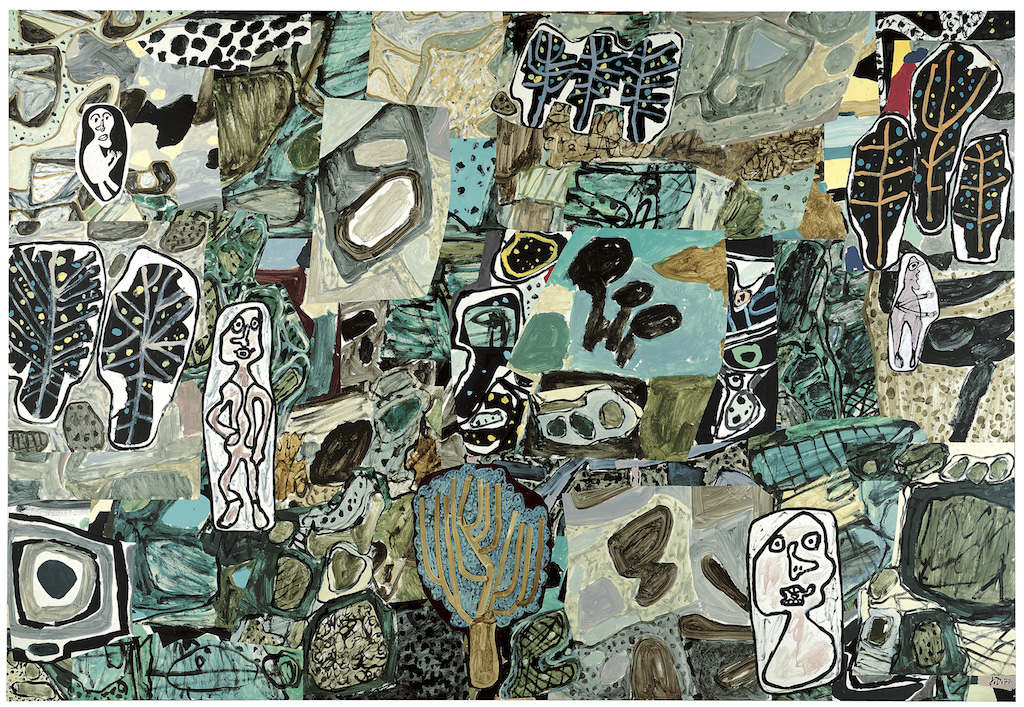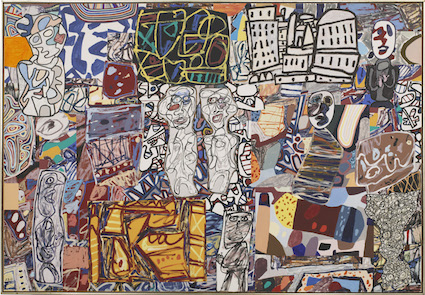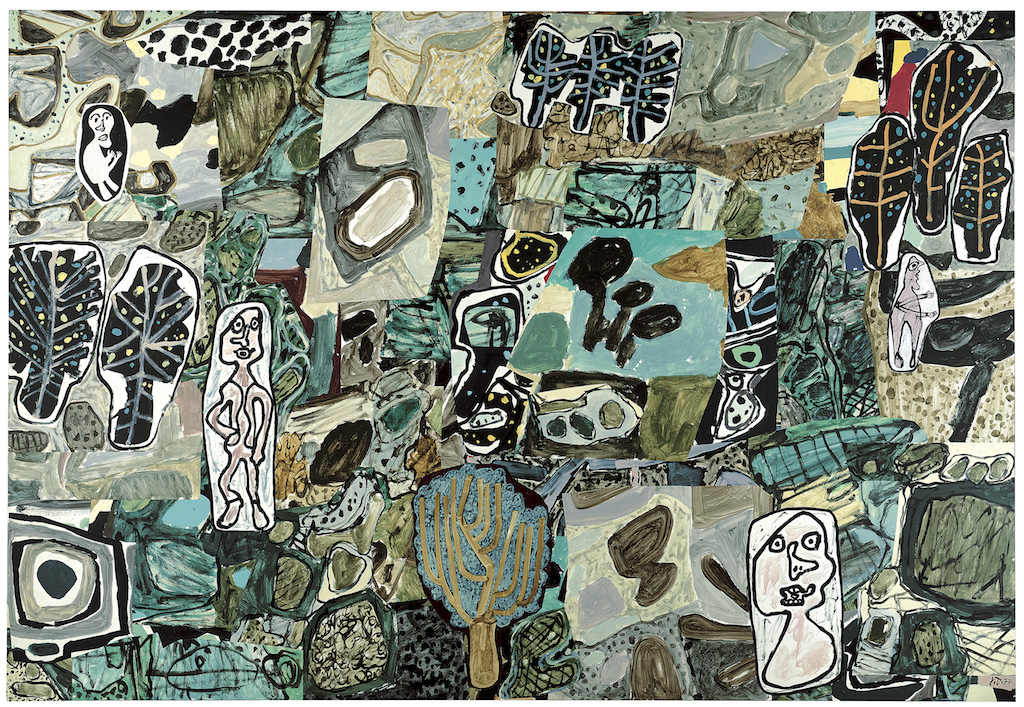[ad_1]

Jean Dubuffet, La riante contrée, 1977.
©2018 ARTISTS RIGHTS SOCIETY (ARS), NEW YORK/ADAGP, PARIS
Following an exhibition in London last fall, Pace Gallery will show more paintings from Jean Dubuffet’s late-’70s series “Théâtres de Mémoire” this summer in New York. The large and lesser-known works by the late French artist caused a “fuss” recently in England, according to Pace founder Arne Glimcher, who added, “I think I struck a nerve with that show.”
The New York exhibition, which opens in Chelsea on May 18 and runs through June, will draw on the same series of “Theaters of Memory” paintings that Dubuffet created between 1975 and 1978. A few will carry over from the London show, but most will be different, by way of loans from American museums.
“They are incredibly ‘now,’ and a lot of people don’t know these works,” said Glimcher, whose relationship with Dubuffet dates back to 1967. “When we showed them in the ’70s, we sold out both exhibitions, and hardly anyone has resold them. There’s a whole generation of curators who haven’t seen them.”

Jean Dubuffet, Mêle moments, 1976.
©2018 ARTISTS RIGHTS SOCIETY (ARS), NEW YORK/ADAGP, PARIS
Among the works’ most significant aspects are their energy and size. “I think they look so fresh and new, and the scale is something different,” Glimcher said. “Most people think of his work as small by today’s comparison”—whereas paintings in the forthcoming show are as large as 8 x 12 feet.
The dealer said he has a special attachment to Dubuffet, with whom he starting working when he was a budding young dealer in his 30s. “I have a huge emotional investment in Dubuffet,” he said. “We were together the last 18 years of his life. When these paintings happened, I thought they were in a class with his portraits and the Corps de Dame—they’re some of the greatest paintings he ever made.
“And I was fascinated by the way he made them. He would have stacks of images on the floor that he’d cut out—trees and figures and squiggles—and he put a metal wall into his studio. With magnets, he attached the pieces to the wall, and then he would build them, tear them apart, put them back together. He worked on them like that for quite a while. When he had them the way he wanted, they would be glued to canvas. I hadn’t seen anything like it before, and haven’t seen anything like it since.”
Another admirer of Dubuffet’s at the time was Jean-Michel Basquiat. “He would come to the gallery all the time and ask if anything new had come in, and if something spectacular came I called him so he could come and look,” Glimcher said. “I don’t think anybody sees the connection. I did an exhibition eight years ago that fell on deaf ears called ‘Dubuffet and Basquiat: Personal Histories.’ I think he was the biggest influence on Basquiat.”
The fondness ran both ways. “Dubuffet liked Basquiat’s work—there were very few artists he cared about, and the two he really liked were Claes Oldenburg and Basquiat,” Glimcher said. “Historically the only artist he liked was Fernand Léger.”
The rationale behind mounting a non-selling show of works from an under-appreciated part of Dubuffet’s oeuvre is simple, Glimcher said. “For the last ten years Dubuffet has not been very popular, and suddenly he’s popular again. This is for a generation who grew up not knowing the work.”
[ad_2]
Source link

